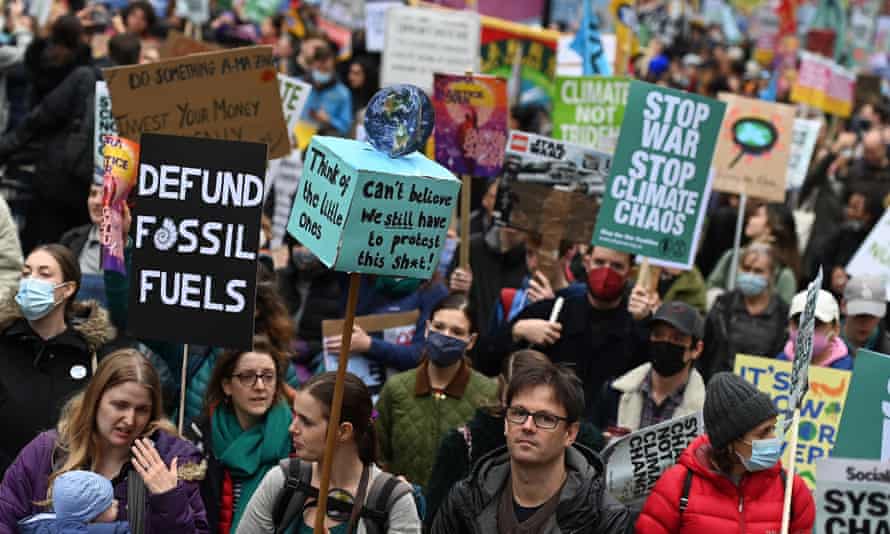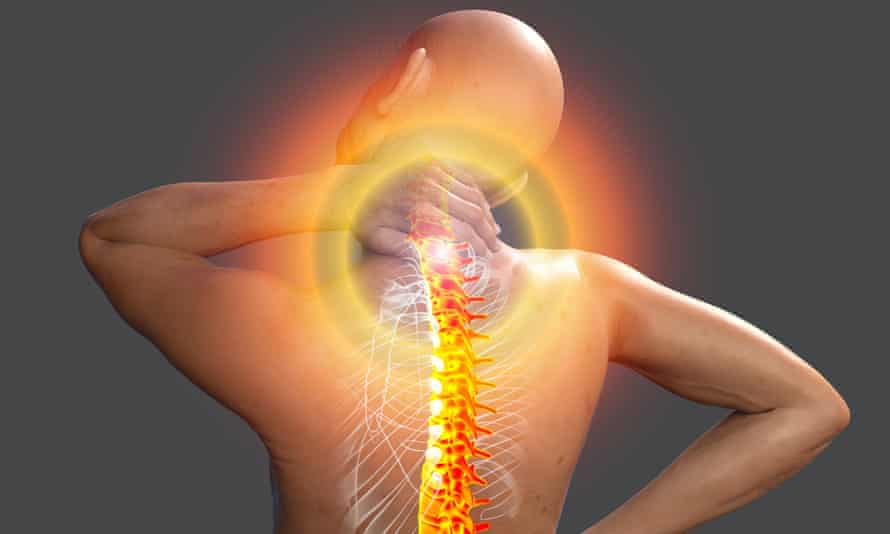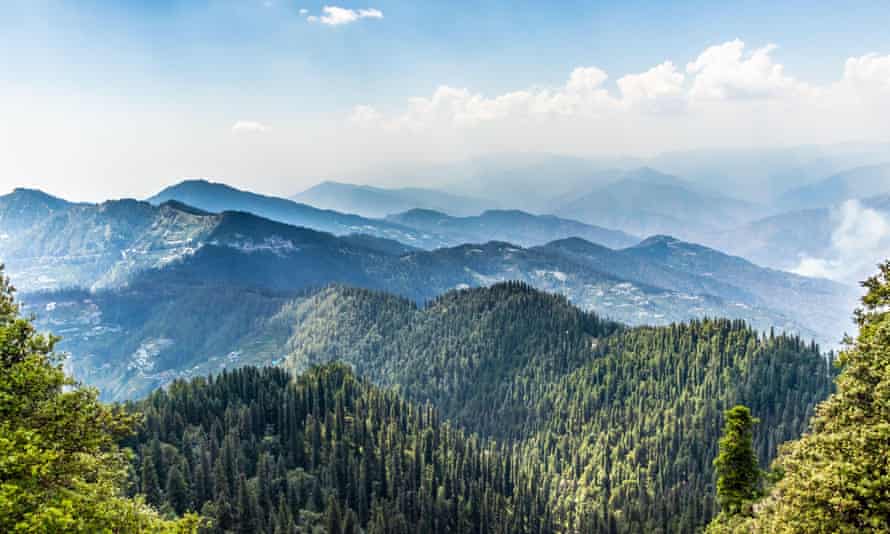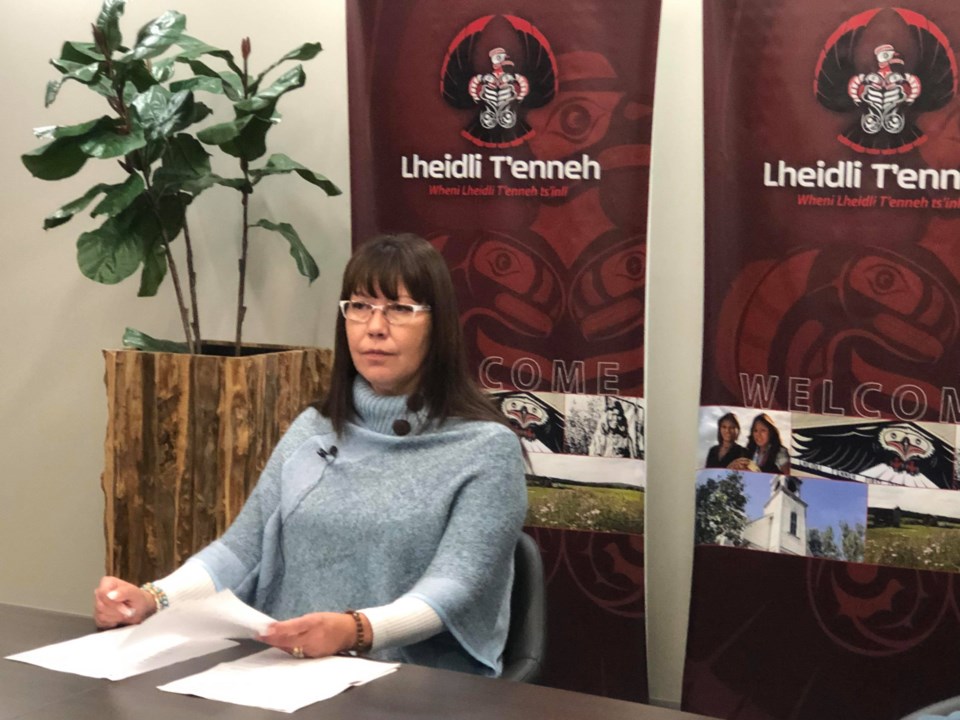Billionaires in space, an end-date for deforestation, facing up to racial bias in healthcare – we asked scientists to share the most important developments of 2021

Sun 19 Dec 2021
The billionaire space race
Space made the headlines on many occasions in 2021: the landing of Nasa’s Perseverance rover on Mars, the arrival of a rare meteorite in the UK, the launch of a mission to hit an asteroid, the discovery of almost 200 new planets beyond the solar system – all shared their moment of fame with the public. However, the most extensive coverage of space news was probably of the 11-minute flight to outside the edge of Earth’s atmosphere made by William Shatner, AKA Captain James T Kirk of the USS Enterprise, in October 2021.
The flight was the second made by the New Shepard rocket, named in honour of the first American in space, Alan Shepard, and operated by Blue Origin, a company owned by Jeff Bezos. New Shepard’s first passenger flight in July 2021 carried Bezos and three others, but Richard Branson pipped Bezos to the post of being the first billionaire to make a space flight by taking off in Virgin Galactic’s rocket, Unity, nine days earlier. A back-and-forth bicker about whether Branson had been into space has rumbled along ever since. Branson’s flight only reached 55 miles (88km) above the Earth’s surface, so didn’t cross the Kármán line, the boundary 100km above the surface that marks the edge of space. Bezos’s flight did.
Why should we care about extremely wealthy individuals who can afford their own spacecraft?
Monica Grady
These voyages are significant technological developments. But why should we care about a handful of the fortunate few who have been transported into space by extremely wealthy individuals who can afford their own spacecraft? The importance comes in what this represents for the future. We have seen, over the last decade or so, the development of individual private companies building satellites. Now we have companies – like Elon Musk’s SpaceX – with their own rocket programmes, winning contracts from government agencies to carry out launches for them. SpaceX has also carried cargo and astronauts to the International Space Station for Nasa.
Space tourism might be thought a natural next step in space exploration – and there is nothing wrong with private enterprise taking this forward as long as it is monitored and regulated appropriately. And that is where these flights are significant. They open up a whole new series of issues to be addressed before space travel can move from control by governments to the private sector.
The International Civil Aviation Organisation, an agency of the UN, oversees policies to ensure safe, secure, effective and fair access to the skies. The UN also has an Office for Outer Space Affairs, which is responsible for application of the Outer Space Treaty. I do not know if the two organisations are discussing under whose responsibility space tourism falls – but I do know that the Outer Space Treaty, which came into force in 1967, is almost solely concerned with the activities of governments, not private individuals or companies, and so should be revisited as a matter of urgency.
Leaving all this aside, I thought there was a much more exciting first in the history of spaceflight that occurred in 2021. It was the flight of Ingenuity, the little helicopter carried by Perseverance to Mars – the first flight on another planet. Now that is an achievement to write home about.
Monica Grady is professor of planetary and space science at the Open University

2021 was the year when it became widely understood that inequalities in health outcomes for black and Asian people were partly the result of a mix of professional, systemic and technical biases that together produce institutional racism.
It was a year when many people bought pulse oximeters believing that, if they became ill with Covid-19, a finger-tip reading would alert them to seek medical assistance. However, black and Asian people learned that their pulse oximeters were three times more likely to miss low oxygen levels in dark skin. The health secretary, Sajid Javid, who is himself from a Pakistani family, launched an investigation in November. However, this is in a pandemic where platitudes that “we are all in the same boat” swiftly gave way to a reality of “we are all in the same storm, but not in the same boat”, as it became clear that black and Asian people were much more likely to die from Covid-19 than white people. Clearly, technical biases do not help.
This is a pandemic where ‘we are all in the same boat’ became ‘we are all in the same storm, but not in the same boat’Ann Phoenix
2021 also saw publicity given to revelations that black and Asian women were respectively four and two times more likely to die in childbirth, and to have more stillborn infants than white women. These systemic, institutional biases were not even recorded in national statistics until reported by MBRRACE (Mothers and Babies: Reducing Risk through Audits and Confidential Enquiries across the country). The Office for National Statistics, which has now convened an Inclusive Data Taskforce to ensure that everyone counts and is counted, will no doubt produce figures in the future.
The oximeter and childbirth examples say little by themselves about professional practices and discrimination. However, in May 2021 the airing of a BBC documentary, Subnormal: A British Scandal, led to an apology from the BPS Division of Educational and Child Psychology for its history in the 1960s and 1970s of diagnosing large numbers of black children as educationally subnormal and having them removed from mainstream education. Yet, even the Inner London Education Authority had documented that they knew many were not “subnormal”.
Taken together, these examples point to a healthcare system where black and Asian people have reasons to question whether they will gain equal treatment. As the pandemic has shown, unless we are pulled into the same boat, no one can be sure that they are safe. Building trust that, for example, vaccines are designed with black as well as white people in mind, requires that trust more generally is built. 2021 may, hopefully, prove to have been a landmark year when enough people recognised the importance of building genuine equality in the healthcare system.
Ann Phoenix is professor of psychosocial studies at University College London
Cop26: time to act

Global heating isn’t just the story of this year; it’s the big beast in the background (and sometimes the foreground) of every other scientific development this century. But there were some big science milestones this year, and a significant shift of emphasis.
In August, the Intergovernmental Panel on Climate Change (the IPCC) published the first chunk of its Sixth Assessment Report, which covered the state of our knowledge about the climate system and what science can tell us about what will happen next. The overall message was the same as the Fifth Assessment Report in 2014, but even clearer and stronger: things are bad, and drastic action is required to keep the worst consequences at bay. But there has been a significant shift this year from hand-wringing to action, even though progress on the “action” bit is still far too slow.
The media focus on events at Cop26 rather than the climate science itself is a good thing: more science will always be important, but we already have more than enough science to act. The next steps are about the flow of money, political and humanitarian priorities, and the messy business of global collaboration. But robust science will keep that process honest: we can predict the consequences of our actions, and those predictions must motivate us all, government, business and individuals alike.
Helen Czerski is a physicist and oceanographer at University College London
Fibromyalgia: new understanding could lead to treatments for chronic pain

Fibromyalgia – characterised by widespread pain, crippling fatigue and emotional distress – affects 1 in 40 people, predominantly women, but has no known cause or cure. Like many other chronic pain conditions, it is considered a “functional neurological disorder”, best explained by differences in how the brain processes and attends to pain signals. The current treatments therefore include CBT and stepped exercise, but have limited efficacy.
A King’s College-led study published in 2021 may change all of that. Researchers injected mice with antibodies from fibromyalgia patients and found they developed difficulties related to the patients’ symptoms: reduced movement, grip weakness, and increased sensitivity to cold and pressure. Mice injected with antibodies from healthy adults did not develop these problems.
The authors conclude that fibromyalgia is an autoimmune disorder. If replicated, this finding would revolutionise the diagnosis and treatment of this, and possibly other, chronic pain conditions. The mice in the study recovered when the antibodies had cleared from their systems, raising the hope that treatments that reduce antibodies, such as plasma exchange, may end the misery of fibromyalgia for millions of people across the globe.
Francesca Happé is professor of cognitive neuroscience at King’s College London
A boom in precise protein-structure prediction by AI

In more than 60 years since the first detailed structure of a protein was determined at atomic resolution by X-ray crystallography, a series of increasingly powerful experimental techniques had resulted, by 2020, in structural elucidation for well over a third of all proteins encoded by the human genome. Nevertheless, a large part of the proteins remained intractable for traditional laboratory methods, resulting in a major gap in our efforts to make sense of the protein-coding genome sequence information. 2021 has seen major advances in overcoming this limitation, based on AI-powered computational structure-prediction methods of unprecedented accuracy.
In July, DeepMind’s second generation of the AlphaFold algorithm was used to generate a comprehensive atlas of protein structures for almost 99% of all human proteins, including tens of thousands of structures for critically important components of the human body that had evaded previous experimental characterisation. Excitingly, all this information is freely available to the global research community through the Alphafold Database hosted at the European Molecular Biology Laboratory in Cambridge.
This breakthrough was followed by another publication in August in which a group at the University of Washington in Seattle took AlphaFold’s AI approach to the next level. In a living cell, proteins rarely carry out their functions in isolation; instead, they engage in a complex molecular dance guided by protein-protein interactions. The enhanced algorithm managed to accurately predict the molecular details of these interactions, taking us an important step forward towards an understanding of the dynamics of human cell physiology.
Combined with the massive acceleration of genome sequencing, these new computational tools for predicting the detailed three-dimensional structure of the cellular machinery are rapidly being deployed in laboratories worldwide, enabling new strategies for drug discovery and making sense of the function of the human body. And the story of AI applications in biology is not going to end here. Watch this space in 2022.
Eriko Takano is professor of synthetic biology at the University of Manchester
Extreme weather becomes more extreme

The last year has been anticipated by climate scientists for a good while, with both the delayed Cop26 conference and latest Intergovernmental Panel on Climate Change report finally released. But it has been the unexpected aspects of nature – and the inability of governments to properly prepare for them – that has provided the reality check of climate risk in 2021.
The “heat dome” that inflated itself and sat over North America this summer was perhaps the moment that made climate scientists go wide-eyed. The fact that temperature records were not just broken, but completely obliterated across wide parts of Canada and the US, was the first indication that something new was happening. When the heat turned to fire, destroying millions of acres of forest, wiping out whole communities, the academic oddity became a frightening reality.
The fact that temperature records were completely obliterated was the first indication that something new was happening.Hannah Cloke
Heatwaves and fires in the eastern Mediterranean had a similar effect, while parts of Australia, having suffered years of drought and fire, were flooded. The devastating floods that killed more than 200 people in the world’s most developed region around the Rhine showed that money and democracy are no protection against nature at her angriest. They also showed that advances in weather and flood forecasting are useless unless authorities heed their warnings and act swiftly.
Hannah Cloke is professor of hydrology at the University of Reading
Record numbers of children living with obesity

The most significant story of the year for me was not a breakthrough but a setback. In November the National Child Measurement Programme revealed a shocking increase in one year of the numbers of primary schoolchildren in England living with obesity – up from a fifth to a quarter of those aged 10-11. More shocking are the widening inequalities – 14% of children in the most affluent neighbourhoods live with obesity, compared with 34% in the most deprived.
The pandemic has exacerbated these trends, but they long predate it. Poverty drives obesity, as do environments that make healthy eating and physical activity increasingly difficult. Fast food outlets, junk food adverts, pedestrian injuries and air pollution are far greater in our poorest neighbourhoods, and green spaces far less common. Evidence from cities improving these environments shows promise.
Creating healthier towns and cities is challenging, and resisted by powerful commercial interests, but its impacts go well beyond childhood obesity. It would improve children’s mental health, reduce adult obesity and in turn dementia, type 2 diabetes and many cancers. Re-greening our urban environments, prioritising play and pedestrians over traffic would also contribute to a net zero world. Reversing this setback for children’s health through science-led policies could then become the breakthrough story, protecting us all, and our planet.
Theresa Marteau is a behavioural scientist and director of the Behaviour and Health Research Unit, University of Cambridge

On 28 February 2021, there were more than 1,000 reports of an unusual streak of light across the skies of the UK. But scientists were already on the case – the UK Fireball Alliance’s cameras had picked up the signal and were busy estimating a landing site. The fireball was a meteor, an extraterrestrial remnant of our early solar system hurtling at hypervelocity through our atmosphere, ending its journey in pieces, scattered across rural Gloucestershire.
A meteor is more than just a remarkable sight; we can back-track its trajectory through the darkness to work out where it came from, and also predict where fragments will land. Recovery teams were deployed, and multiple pieces were found in a family driveway and a nearby sheep field. The meteorite – the first of its kind recovered in the UK for 30 years – was a primitive “carbonaceous chondrite”: a rare specimen containing materials essentially unaltered since the formation of the solar system circa 4.5bn years ago.
To recover an uncontaminated primitive meteorite is unusual, and allows us an opportunity to learn about the basic building blocks of planets, and how the Earth came to possess the resources required to sustain life. Analysis suggests that the Winchcombe meteorite comes from an object near Jupiter’s orbit which contains water and ice, and has a chemical makeup similar to our Sun.
As scientists, we spend a lot of time looking up and out at the vastness of space. Missions like Jaxa’s Hayabusa2 and Nasa’s Osiris-Rex have been sent to asteroids with the express purpose of returning samples to Earth, and the recently launched Nasa Dart mission aims to test the technology required to divert larger and more threatening space rocks heading our way. But the Winchcombe meteorite is like a gift from the universe, landing on our doorstep, delivering a sample of the early solar system directly to us for analysis and inspiration.
Prof Emma Bunce is head of physics and astronomy at the University of Leicester, and president of the Royal Astronomical Society.

While the first vaccine made from genes was approved last December, it was only in 2021 that we learned how effective the Pfizer jab was in the real world. The idea is that this genetic material, known as ribonucleic acid, or RNA for short, is transported into cells where the antigen is manufactured to create the immunity from disease and death. In theory, these RNA vaccines could be tweaked in response to new variants.
Two other things make RNA vaccines remarkable. First, it took 10 months from sequence to vaccine approval, a remarkable sprint when it normally takes a decade. Second, the vaccines introduced tiny fatty particles safely into mainstream healthcare. RNA vaccines are packaged within tiny fatty particles and these fatty shuttle buses are absolutely essential when it comes to getting RNA into the cells.
This excellent science has highlighted two other issues. Vaccines do prevent serious disease but do not always stop transmission, and we will need to rapidly halt transmission in future pandemics. Our economies depend on this. Additionally vaccine inequity makes a mockery of international vaccination efforts, as illustrated by the Omicron variant. While vaccination rates in the UK hover at 70%, the comparable figure for the African continent is just over 4%.
Ijeoma F Uchegbu is professor of pharmaceutical nanoscience at University College London
The role of nature in tackling global heating is finally recognised

This year, a huge scientific effort over many decades finally paid off in policy terms. The United Nations climate conference held in Glasgow (Cop26) has been labelled “Nature’s COP” because of the high profile given to conserving and restoring natural ecosystems, in particular forests, as a way of tackling global heating. On just the second day, world leaders (now more than 140, covering more than 90% of the world’s forests) pledged to end deforestation by 2030.
Data demonstrating the importance of forests to the planet’s carbon balance has been extremely hard won. Literally thousands of scientists have been measuring tree growth, tree death, and emissions, from thousands of forest plots, over many, many years. Collaborations such as ForestPlots.net, RainFor and the Global Ecosystems Monitoring network have done incredible work drawing together and standardising these essential field measurements. The resulting data has demonstrated, for example, that the vital role of intact tropical forests in soaking up anthropogenic carbon emissions is starting to reverse, and have allowed calculations of the potential contribution natural climate solutions could make to tackling the climate crisis.
There is widespread scepticism about the extent to which the Glasgow leaders’ declaration on deforestation can be delivered: similar pledges in the past have spectacularly failed. However, such clear recognition that there is no path to net zero without nature is a very positive step.
Julia PG Jones is professor of conservation science at Bangor University










